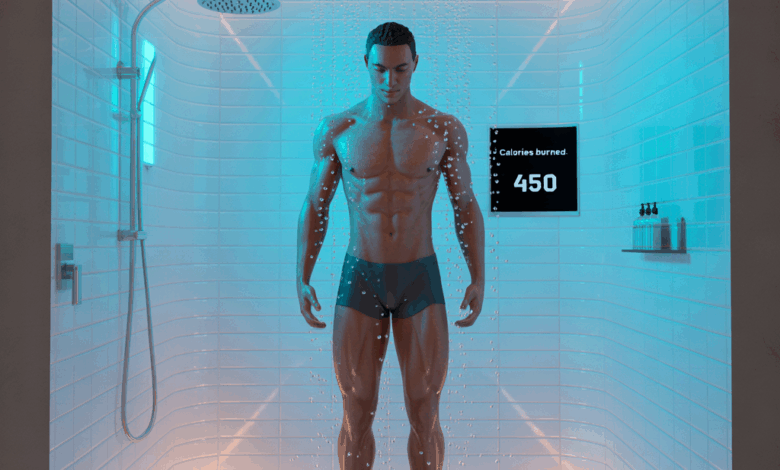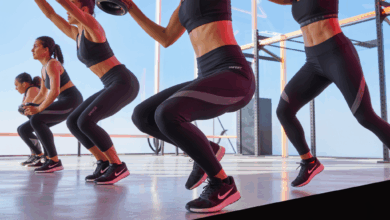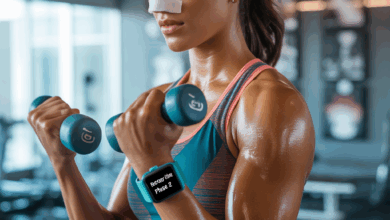How Many Calories Does a 10 Minute Cold Shower Burn? — Science, Tips & Real Results

Ever stood under a cold shower after a workout and wondered, “Am I melting fat right now?” You’re not alone — the idea that cold exposure can torch calories is everywhere. Whether you’re short on time or chasing tiny, consistent habits that add up, it’s a fair question: how many calories does a 10 minute cold shower burn, and is it worth including in your routine?
Quick answer: What to expect from a 10-minute cold shower
Short version: a 10-minute cold shower burns very few calories compared to exercise. Most estimates put the calorie burn from passive cold exposure (like taking a cold shower) at roughly 5–50 calories for 10 minutes depending on factors like water temperature, body size, and individual metabolism. Cold-induced thermogenesis and activation of brown fat do increase energy expenditure, but the effect is modest. Think of cold showers as a metabolic nudge — useful as part of a broader lifestyle plan, not a standalone fat-loss hack.
Why cold exposure burns calories: the science behind thermogenesis
When your body is exposed to cold, it works to maintain core temperature. That process is called thermogenesis. There are two main mechanisms:
- Shivering thermogenesis: Involuntary muscle contractions that generate heat — this burns more calories but is uncomfortable and unsustainable.
- Non-shivering thermogenesis: Metabolic processes, often linked to brown adipose tissue (brown fat), that generate heat without visible shivering.
Research shows cold exposure activates brown fat in some people, increasing calorie burn. However, real-world cold showers are brief and not as intense as controlled cold-exposure studies, so the metabolic boost is limited.
How many calories does a 10 minute cold shower burn? Breaking down the numbers
The exact number varies, but here are practical ranges and examples so you can contextualize what a 10-minute cold shower does for your daily energy expenditure:
- Low estimate (minimal thermogenic response): 5–10 calories in 10 minutes — typical for someone who tolerates cold well and doesn’t shiver.
- Moderate estimate (mild non-shivering thermogenesis): 10–30 calories in 10 minutes — common for most adults in cool water.
- High estimate (shivering or strong brown fat response): 30–50+ calories in 10 minutes — possible if you shiver intensely or have highly active brown fat.
For comparison, 10 minutes of brisk bodyweight circuit training can burn 80–150 calories depending on intensity. So, while cold showers do burn calories, exercise remains far more efficient.
Factors that influence calorie burn from cold showers
- Body mass and composition — more muscle increases heat production capacity.
- Water temperature — colder water increases thermogenic demand.
- Duration and frequency — repeated exposure can slightly increase brown fat activity over time.
- Individual tolerance — people who shiver burn more calories than those who don’t.
Should you take cold showers for weight loss?
Cold showers alone are not a reliable weight-loss strategy. They can complement a calorie-controlled diet and an active lifestyle, but expecting a 10-minute cold shower to replace exercise is unrealistic. That said, cold showers offer other benefits that support a healthy routine:
- Improved alertness and mood after an invigorating rinse.
- Potential mild boost in metabolism over time with repeated exposure.
- Faster post-workout recovery for some athletes due to reduced inflammation.
Practical fitness tips — how to use cold showers effectively
Want to include cold exposure without making it a chore? Try these realistic approaches:
- Contrast showers: Alternate 1–2 minutes warm with 30–60 seconds cold for 5–10 minutes total. This supports circulation and recovery.
- End-of-shower blast: Do a 30–90 second cold finish after your regular shower. It’s easier to adopt and still stimulates thermogenesis.
- Combine with movement: Do light bodyweight moves (air squats, lunges) before or after the cold exposure to raise heart rate and increase total calorie burn.
- Consistency over intensity: A daily cold finish is more sustainable than an occasional extreme cold session.
Workout variations to pair with cold showers
Use cold showers as a recovery or invigorating tool alongside these quick routines:
- High-Intensity Interval Training (HIIT) 15–20 minutes for maximum calorie burn.
- 10-minute mobility and core circuit followed by a cold finish to support recovery.
- Morning bodyweight AMRAP (as many rounds as possible) + cold blast to kickstart metabolism.
Explore sample plans on our workout routines page to find a format that fits your schedule.
Real-world example: a week in the life
Meet Jess, a busy teacher who wants small, sustainable changes. Jess adds a 60-second cold finish to her morning shower, does three 20-minute HIIT sessions per week, and follows a whole-foods based meal plan. Over three months she notices better energy, slightly improved body composition, and no major change in scale weight attributed solely to the cold showers — but they helped her stick to a consistent routine.
Safety, comfort, and tips for beginners
- Start with shorter cold bursts (15–30 seconds) and build up gradually.
- Avoid extreme cold exposure if you have heart conditions or uncontrolled blood pressure; check with a healthcare provider first.
- Focus on breathing — slow, controlled breaths reduce the shock response.
- Combine with proper nutrition and regular exercise for meaningful results; see our nutrition guides for meal strategies.
Frequently Asked Questions
Cold showers can increase calorie expenditure slightly via thermogenesis, and activation of brown fat may support fat burning. However, the effect is modest — cold showers are not a magic fat-loss tool. Sustainable weight loss still relies on calorie balance and exercise.
Short bursts (30–90 seconds) can stimulate thermogenesis and alertness. Repeated exposure over weeks may modestly increase brown fat activity. For calorie-burning purposes, longer durations (beyond several minutes) may raise the metabolic effect, but discomfort and safety become concerns.
It depends on your goal. Cold exposure after intense training can reduce inflammation and aid recovery, but doing it immediately before strength training might blunt muscle adaptation. Use cold showers for recovery or morning invigoration rather than a pre-workout routine for strength gains. Explore recovery strategies on our wellness tips page.
Conclusion — how many calories does a 10 minute cold shower burn and what to do next
So, how many calories does a 10 minute cold shower burn? Most people will burn a small number — generally between 5 and 50 calories — depending on individual factors. Cold showers are a low-cost tool that can support alertness, recovery, and a tiny metabolic boost, but they should complement—not replace—regular exercise and good nutrition.
Ready to turn small daily wins into real progress? Start with a 30–60 second cold finish after your next shower, pair it with a 20-minute workout three times this week, and check out our workout routines and nutrition guides for practical plans. Try it for two weeks and notice how you feel — then adjust from there.
Call to action: Want a 2-week starter plan that combines short cold showers, quick workouts, and simple meals? Sign up on our site to get a downloadable routine and meal checklist to help you build sustainable habits.





